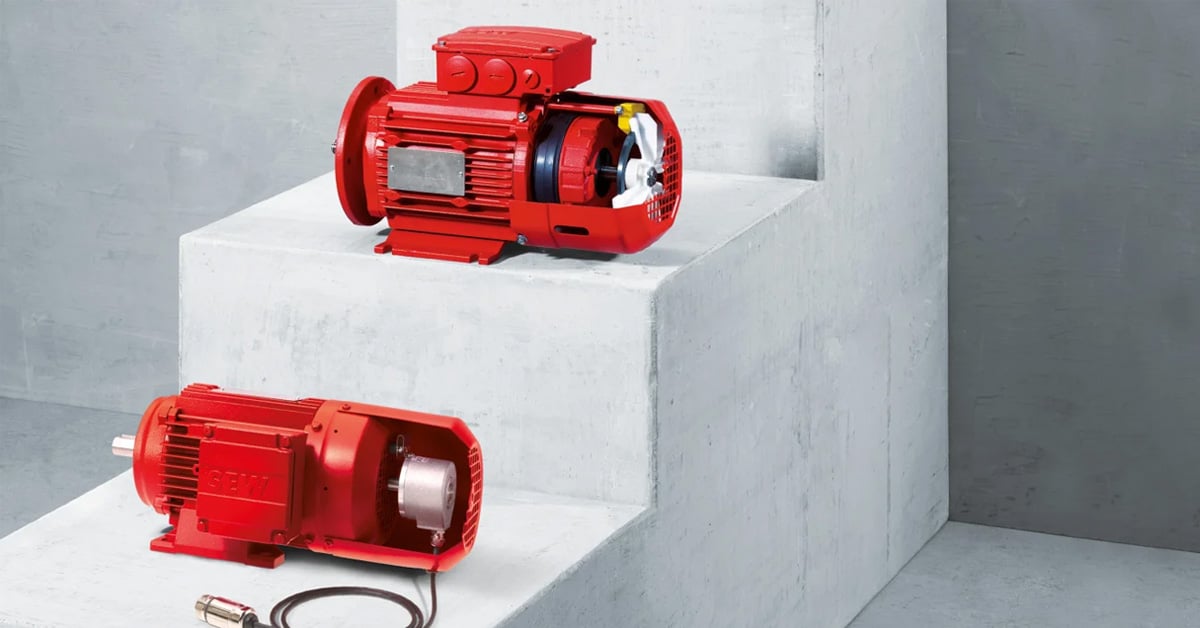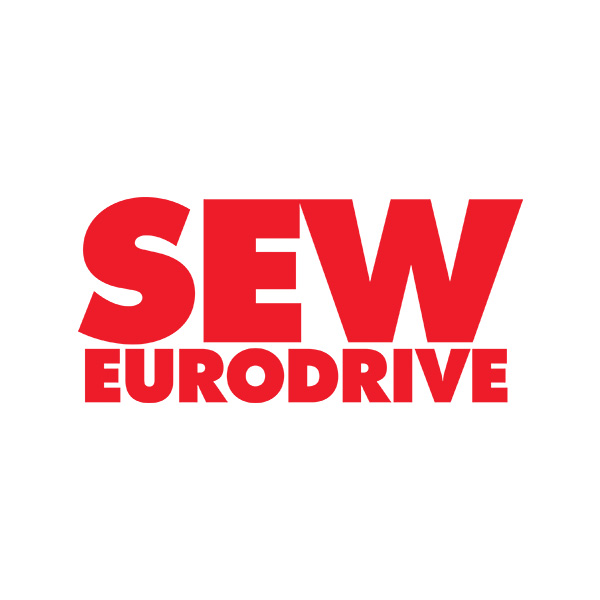Enhancing Control Precision in Modern Automation
In today’s automation environments, accurate speed and position control is essential to keeping machines and systems running at peak performance. Whether you're moving a robotic arm, indexing a conveyor, or lifting with a hoist, precise motor feedback is what ensures everything moves exactly as intended. That’s where encoders come in, converting motion into usable data that enables smarter, more responsive control.
Why Encoders Matter in Motion Systems
A Variable Frequency Drive (VFD) controls motor speed and torque, but without an encoder, it can only estimate actual performance. Encoders provide critical feedback, enabling closed-loop control. This allows the VFD to confirm what’s happening at the motor shaft and make immediate adjustments. The result: consistent speed, precise positioning, and better system repeatability.
Applications that benefit most from encoders include:
- Speed-critical machines: Packaging lines, gantries, storage and Retrieval Systems (ASRS), Indexing Machines, Lifts and high-speed hoists
- Precise positioning systems: Pick-and-place robotics, linear gantries, ASRS
- Synchronized axes: Printing lines, packaging machinery, conveyor-based assembly, flying saws, caming
Types of Encoders and When to Use Them
Encoders generally fall into two categories: motor-mounted and external, depending on where feedback is captured in the system.
Motor-Mounted Encoders: Precision at the Source
Motor-mounted encoders attach directly to the back end of a motor and provide real-time feedback on speed, position, or both. Because they’re fixed to the motor shaft, they offer accurate, delay-free feedback—ideal when the load moves directly with the motor.
Common use cases:
- Industrial gearbox-driven machinery
- Direct-drive systems
- Indexing tables
- Servo axes
Functional Benefits
- Tight Speed Control: Immediate feedback allows the VFD to maintain accurate setpoints.
- Accurate Positioning: Supports repeatable start/stop points.
- Integrated Design: Compact, protected, and reliable, especially when embedded in the motor fan, as with SEW-EURODRIVE encoders.
Encoder Retrofitting and Dual Feedback
Not every application starts with encoder feedback. If speed or positioning needs change, retrofitting a motor encoder can offer a cost-effective upgrade.
In more complex systems, a dual encoder setup (motor + external) helps ensure both dynamic response and final load accuracy. The motor encoder handles fast feedback; the external encoder validates actual load position, which is critical in systems with slip, stretch, or compliance.
Interface Options
Motor encoders come in various formats, including TTL, HTL, sine-cosine, and digital interfaces like SEW-EURODRIVE’s MOVILINK® DDI. Make sure the encoder and VFD share compatible interfaces. Platforms like MOVI-C® support multiple standards out of the box, simplifying setup.
External Encoders: Load-Based Feedback for Real-World Precision
Motor encoders assume the load and motor move together—but belts, couplings, and gear lash can introduce slip or delay. External encoders measure motion directly at the load, ensuring true position accuracy.
Common types of external encoders:
- Laser Encoders: Use a reflected laser beam to calculate distance. Ideal for non-contact, cleanroom, or long-range applications.
- Rope Encoders: Track linear or vertical motion using a retractable cable and spool. Common in hoists and rugged environments.
- Barcode Linear Encoders: Read printed barcodes along a track to determine absolute position. Often used in overhead conveyors and assembly lines.
When to use external encoders:
- Belt-driven systems are prone to slip
- Long linear axes or hoists
- Systems affected by gear backlash
- Applications where the load's actual position must be verified
Top Functional Benefits:
- Accurate Load Positioning
- Critical for Indirect or Linear Motion
- Enhanced Precision in Dual Feedback Systems
Integration Considerations
Not all drives support dual encoders. High-performance drives like those in the SEW-EURODRIVE MOVI-C® modular automation platform do, offering multiple encoder inputs and broad protocol compatibility for seamless integration.
Incremental vs. Absolute: Choosing the Right Encoder for the Job
Choosing the right encoder comes down to what your system needs to know. Incremental encoders are ideal for speed and positioning feedback which do not need to be often referenced, while absolute encoders provide absolute position data even after power outages etc. Understanding their differences helps ensure accurate, efficient system performance.
Incremental Encoders
An incremental encoder is a type of position sensor that converts rotary motion into a series of electrical pulses. As the motor shaft turns, the encoder generates evenly spaced pulses, often called “increments”, that the control system uses to calculate speed, direction, and relative position. They're ideal for speed-based applications due to their simplicity and cost-effectiveness.
Common interface types include:
- TTL / HTL (square wave)
- Sine-Cosine (analog interpolation for high resolution)
- SEW MOVILINK® DDI (single-cable, digital)
Resolution is measured in increments per revolution (IPR), with higher IPR delivering more accurate speed control.
Absolute Encoders
An absolute encoder is a type of position sensor that provides an absolute digital value for each shaft position, so it always knows the exact position, even after a power cycle. Instead of pulses, absolute encoders transmit a unique digital value for each shaft position. Upon startup, the system immediately determines the shaft position, eliminating the need for homing or referencing routines.
- Single-Turn: Tracks shaft position over one 360° rotation.
- Multi-Turn: Tracks position across multiple rotations, up to millions of counts, ideal for extended linear applications.
Common interfaces include:
- Hyperface® / SEW RS485: Dual-channel—digital absolute position and sine-cosine speed data.
- MOVILINK® DDI: Also supports absolute data in single-cable architectures.
Engineering Considerations
To properly integrate an encoder, engineers must verify:
- VFD Compatibility – Not all VFDs accept encoder inputs. High-performance models, like SEW-EURODRIVE’s MOVI-C® modular automation platform, support multiple encoder standards natively.
- Interface Matching – The encoder and VFD must share compatible electrical interfaces.
- Cabling Infrastructure – Cabling must support the signal type (TTL, sine-cosine, digital bus) and maintain signal integrity, particularly over long runs or in noisy environments.
|
Application |
Recommended Encoder Type |
|
Conveyor with possible slip |
External (laser or barcode) |
|
Direct-drive robot arm |
Motor-mounted absolute |
|
High-speed labeling |
Motor-mounted incremental |
|
Hoist with long vertical travel |
Motor and external encoder (external) |
What About Resolvers?
While not technically encoders, resolvers serve similar purposes. These analog devices are highly durable and cost-effective, often used in servo applications where environmental ruggedness and basic position data suffice. They’re well-suited for harsh or high-shock environments, though they lack the high resolution of digital encoders. Resolvers are commonly used in servo motors.
Simplifying Selection with Clear Naming
SEW-EURODRIVE uses a consistent four-character code to identify encoders:
- 1st character: Encoder type (E = incremental, A = absolute multi-turn)
- 2nd: Shaft attachment (e.g., K = cone shaft, S = spread shaft)
- 3rd: Series number (e.g., 8, 1)
- 4th: Interface (Z = MOVILINK® DDI, H = Hyperface, W = RS485)
This structure makes it easy to identify and match components during design or troubleshooting.
Final Thoughts
Encoders are key to achieving precise, repeatable motion in modern automation. Whether you’re controlling speed, position, or both, understanding the differences between encoder types and how they integrate with your drive platform helps ensure your system performs at its best.
SEW-EURODRIVE’s encoder-enabled motors and MOVI-C® drives offer broad compatibility, simplified wiring, and proven reliability. But regardless of the brand, applying encoder technology thoughtfully can elevate your automation system from functional to exceptional.
Learn More about SEW-EURODRIVE’s Encoder Systems: https://www.seweurodrive.com/products/motors/accessories-and-options/encoders/encoders.html
About SEW-EURODRIVE
Founded in 1931 in Bruchsal, Germany, SEW-EURODRIVE is a global leader in Industrial Automation, with operations in over 50 countries, 17 manufacturing plants, 92 assembly facilities, and more than 21,000 employees. The company holds over 1,000 patents, continuously driving technological advancements in gearmotors, frequency inverters, servo drives, and Industry 4.0 solutions.
SEW-EURODRIVE provides engineered solutions in countless industries, including automotive, food & beverage, pharmaceuticals, mining, steel, logistics, energy, and more, providing customized automation solutions that enhance efficiency, productivity, and sustainability. Despite its global reach, SEW remains family-owned, ensuring long-term vision, strong values, and a commitment to excellence.
SEW-EURODRIVE. Driving the World™
SEW-EURODRIVE, Inc.
220 Finch Road
Wellford, SC 29385
(P): (864) 439-7537
cslyman@seweurodrive.com
www.seweurodrive.com



